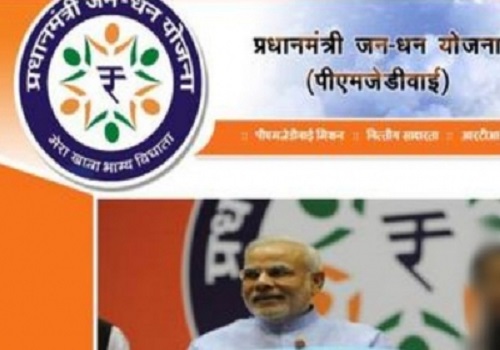Key indices end at record closing highs on Friday

Follow us Now on Telegram ! Get daily 10 - 12 important updates on Business, Finance and Investment. Join our Telegram Channel
In a volatile session, Indian equity benchmarks ended at record closing highs on Friday, amid a largely positive trend in global equities. The markets, after opening on a positive note, rallied through the first half, led by heavyweights. Traders took encouragement with Commerce Secretary Anup Wadhawan’s statement that India's export of agricultural and allied products in 2020-21 grew by 17.34 per cent to $41.25 billion, and this growth momentum is expected to be sustained in the current fiscal as well. Some optimism also came with credit rating agency Icra Ratings’ report stated that with decline in number of fresh COVID-19 cases and easing of restrictions, the country's gross domestic product (GDP) will grow at 8.5 percent in FY2021-22. It expects the gross value added (GVA) at basic prices (at constant 2011-12 prices) to grow at 7.3 per cent in FY2022. It also said if vaccine coverage is accelerated following the re-centralised procurement policy, the GDP expansion in FY2022 may be as high as 9.5 percent, with a widening upside in Q3 and Q4 of FY2022.
Indices, however, lost momentum during the later hours of the day, dragged by financials. Some cautiousness remained among traders with US think-tank has observed that India's domestic challenges due to COVID-19 crisis have become a threat to its regional and global ambitions. It warned that unless it recovers with the help of allies like the United States, the pandemic could impact the geopolitical balance in the Indo-Pacific. But, key gauges managed to end session in green, taking support from report that the arrival of monsoon in the country ahead of the schedule is going to boost agricultural production in the country and is expected to add to turnaround in the economy. Monsoon has arrived into parts of Gujarat, Madhya Pradesh, Chhattisgarh, Odisha, and remaining areas of Maharashtra, Telangana, Andhra Pradesh six days ahead of schedule. Meanwhile, the Reserve Bank of India (RBI) has said that it would be buying bonds maturing between 2026 and 2035 in its third tranche of the G-sec Acquisition Programme (G-SAP). The total size of the G-SAP programme would be Rs 40,000 crore, including Rs 10,000 crore of state development loans.
On the global front, Asian markets ended mostly lower on Friday, as U.S. bond yields eased despite data showing soaring U.S. consumer prices in May. Investors bet spiking inflation would be temporary and the Federal Reserve will maintain its ultra-loose monetary policies for some time. European markets were trading higher as data from the Office for Statistics showed the U.K. economy grew at the fastest pace since July 2020 as government restrictions affecting economic activity continued to ease in April. Gross domestic product rose 2.3 percent month-on-month in April, faster than the 2.1 percent expansion seen in March. The rate was forecast to improve to 2.2 percent. Back home, power stocks were in focus with report that India’s struggling wind power industry is looking to its clean energy rival for help emerging from a pandemic-induced slump. Back home, on the sectoral front stocks related to coal sector were in watch as the government said the coal sector is facing a bit of headwind from the financial markets and that could be one of the reasons for global players not participating in commercial coal mine auctions.
Finally, the BSE Sensex rose 174.29 points or 0.33% to 52,474.76, while the CNX Nifty was up by 61.60 points or 0.39% to 15,799.35.
The BSE Sensex touched high and low of 52,641.53 and 52,388.95, respectively and there were 15 stocks advancing against 15 stocks declining on the index.
The broader indices ended in green; the BSE Mid cap index rose 0.14%, while Small cap index was up by 0.40%.
The top gaining sectoral indices on the BSE were Metal up by 3.21%, IT up by 1.47%, Energy up by 1.19%, TECK up by 1.18% and Basic Materials up by 0.92%, while Realty down by 1.06%, Capital Goods down by 0.66%, Bankex down by 0.36%, Telecom down by 0.34% and Consumer Durables down by 0.33% were the top losing indices on BSE.
The top gainers on the Sensex were Dr. Reddys Lab up by 3.03%, Power Grid Corporation up by 1.97%, TCS up by 1.73%, Infosys up by 1.56% and HCL Technologies up by 1.54%. On the flip side, Larsen & Toubro down by 1.07%, Indusind Bank down by 0.80%, Bajaj Finserv down by 0.78%, Bharti Airtel down by 0.76% and ICICI Bank down by 0.71% were the top losers.
Meanwhile, Credit rating agency ICRA in its latest report has said with decline in number of fresh COVID-19 cases and easing of restrictions, the country's gross domestic product (GDP) will grow at 8.5 percent in FY2021-22. It expects the gross value added (GVA) at basic prices (at constant 2011-12 prices) to grow at 7.3 per cent in FY2022. It also said if vaccine coverage is accelerated following the re-centralised procurement policy, the GDP expansion in FY2022 may be as high as 9.5 percent, with a widening upside in Q3 and Q4 of FY2022.
The agency has taken into account the likely higher outgo towards food subsidies by the government in FY2022, relative to the budgeted level, following the decision to provide free food grains in May-November 2021. It has excluded the impact of the release of food subsidy arrears in FY2021, based on the clarification provided by the National Statistical Office (NSO). The monthly pattern of subsidy release by the government cannot be ascertained at present. Therefore, it cautions that the quarterly trend in GDP growth could differ from our baseline assumption (+14.9 per cent in Q1, +8 per cent in Q2, +5.6 per cent in Q3 and +7 per cent in Q4 of FY2022), based on when the subsidy pay-out is booked. It also expects a prolonged negative impact of the second wave on consumer sentiment and demand, with healthcare and fuel expenses eating into disposable income, and less pent-up/replacement demand in FY2022 relative to FY2021.
Notwithstanding the expectation of a normal monsoon buffering the prospects for crop output and less reverse migration in 2021 compared to 2020, ICRA expects the combination of the sharp rise in rural infections, loss of employment as well as remittances to weaken the rural sentiment and demand. After the satiation of the pent-up demand seen during the festive season in 2020, purchases of consumer durables may be restricted, which would impact capacity utilisation in FY2022.
The CNX Nifty traded in a range of 15,835.55 and 15,749.80 and there were 23 stocks advancing against 27 stocks declining on the index.
The top gainers on Nifty were Tata Steel up by 4.37%, JSW Steel up by 3.78%, Coal India up by 3.67%, Dr. Reddys Lab up by 3.17% and Hindalco up by 2.08%. On the flip side, Axis Bank down by 0.91%, Divis Lab down by 0.86%, Indusind Bank down by 0.85%, Larsen & Toubro down by 0.84% and Bajaj Finserv down by 0.78% were the top losers.
European markets were trading higher; UK’s FTSE 100 increased 45.40 points or 0.64% to 7,133.58, France’s CAC increased 39.40 points or 0.6% to 6,585.89 and Germany’s DAX increased 45.63 points or 0.29% to 15,616.85.
Asian markets ended mostly lower on Friday ahead of the US Federal Reserve policy meeting next week. Meanwhile, global investors are betting that spiking inflation would be temporary and the US Federal Reserve will maintain its ultra-loose monetary policies for some time. Chinese shares declined after data showed the country's broader credit growth continued to slow in May as the central bank seeks to contain rising debt. Japanese shares settled lower with investors remaining cautious about the pace of domestic economic recovery as the country grapples with a fourth wave of the corona virus pandemic.
Above views are of the author and not of the website kindly read disclaimer


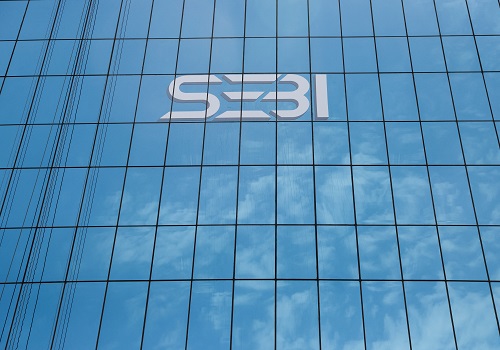







Tag News

Weekly Market Analysis : Markets strengthened recovery and gained nearly 2% in the passing w...
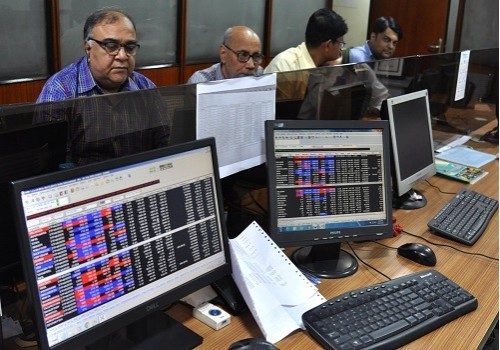
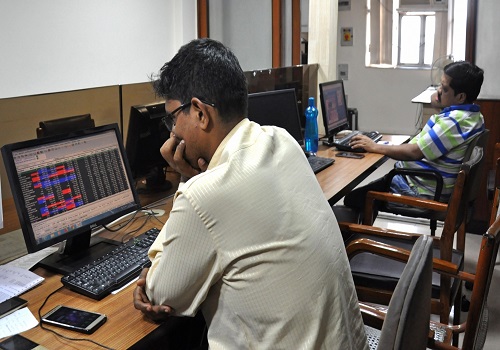
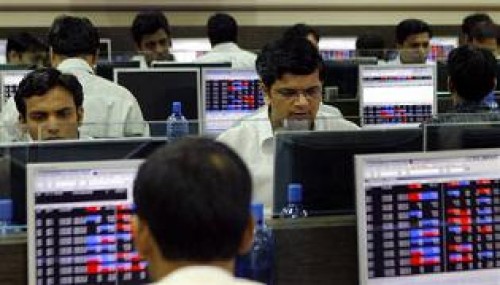
More News
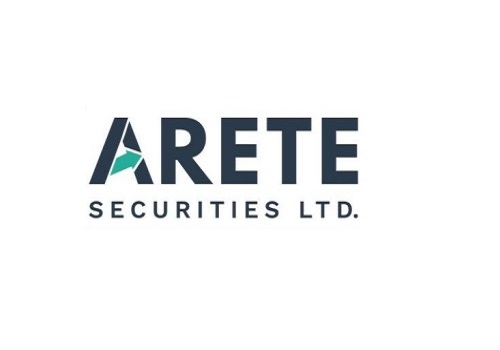
The?company gets a work order for electric vehicle charging infrastructure worth INR 4.5 mil...









